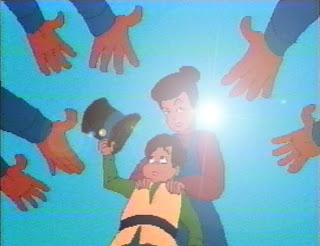Dreams are how our brain digests information. I think the brain works a lot like our digestive tract. The important nourishing facts get stored away in our memory and the unimportant facts get excreted. In other words, forgotten.
A long time ago, I used to keep a dream journal. I would wake up and write down what I could remember of my dreams. At first it was just a fragment of a dream in a sentence. Then it became a paragraph. Then as I exercised the memory muscle and primed the pump, I started to remember whole dreams that took a couple pages to describe.
I would notice after coming back and reading these journals months later that recurring patterns occurred in my dreams. When you found those patterns, they were something important you were wrestling with and by seeing the different ways the same patterns were expressed in different dreams, it was like looking at the same thing from different angles and you could start to isolate what was so important you were trying to tell yourself.
So one function of dreams are important themes in your life, your own personal mythology like what Joseph Campbell used to talk about.
Another function of dreams is just to process the day's experiences. What you need for survival gets stored away like I said, and the rest is flushed down the mental drain.
Then I read an interesting article in either Time or Newsweek when I was in high school. It said that sometimes when you have a dream that you are trapped and can't get away, it's not some profound existential dilemma that your life is in. You have simply rolled over in bed and you are laying on your arm.
A lot of people say they never dream. Everyone dreams. They just don't remember their dreams. For artists, it is not enough to dream and internalize their dreams. They have to take their dreams and externalize them in some way. It can be a sculpture that you can walk around, a song that you can hear, a drawing, a movie, or a game. They have to put their unconscious out there for all to see. (I remember at the museum in Pasadena, I first saw a Jaques Lipschitz cubist sculpture. It was amazing. It was like a Picasso cubist painting that you could walk around. Same with Alexander Calder's mobiles. They were like being inside a Joan Miro painting),
The impulse is a lot like the scenes in Stephen Spielberg's Close Encounters of the Third Kind, where some people were making music, and others were building a mountain in their mashed potatoes.
For a long time I had songs in my head and I could never play all the parts I could hear in my head. I would record them with an acoustic guitar and when playing back the recording, I would sing the harmony part that I couldn't record. The day I got GarageBand, I recorded one of my songs with all the tracks I had heard in my head. I laid on the couch and listened to it with headphones. I feel asleep. Not because I was bored with my own song, but because my mind had been freed. I didn't have to carry any of the parts in my head worrying that I would forget them. It was like housecleaning.
So everyone dreams. But artists are super dreamers. In some way, they have to make their dreams exist in physical reality.





